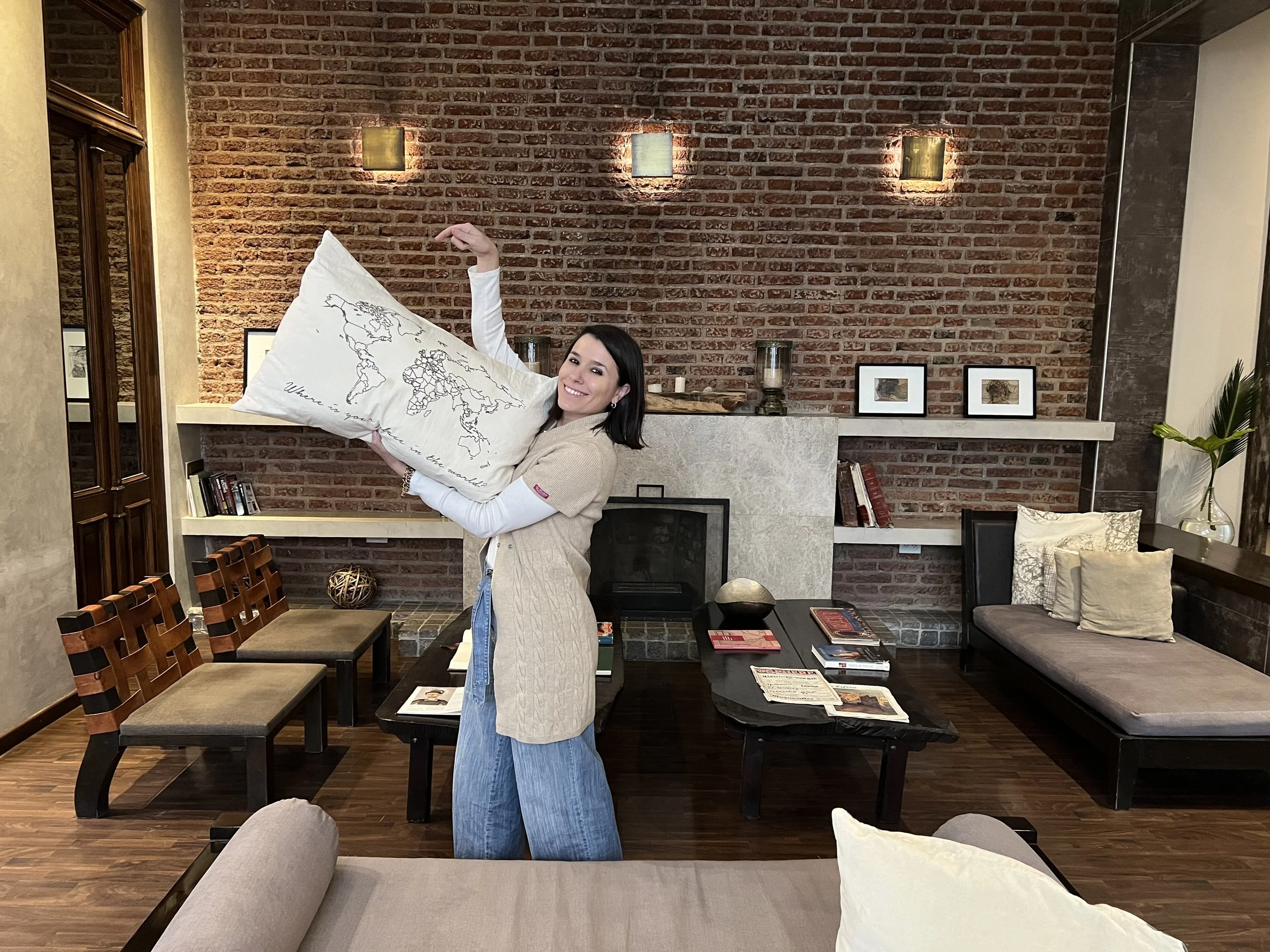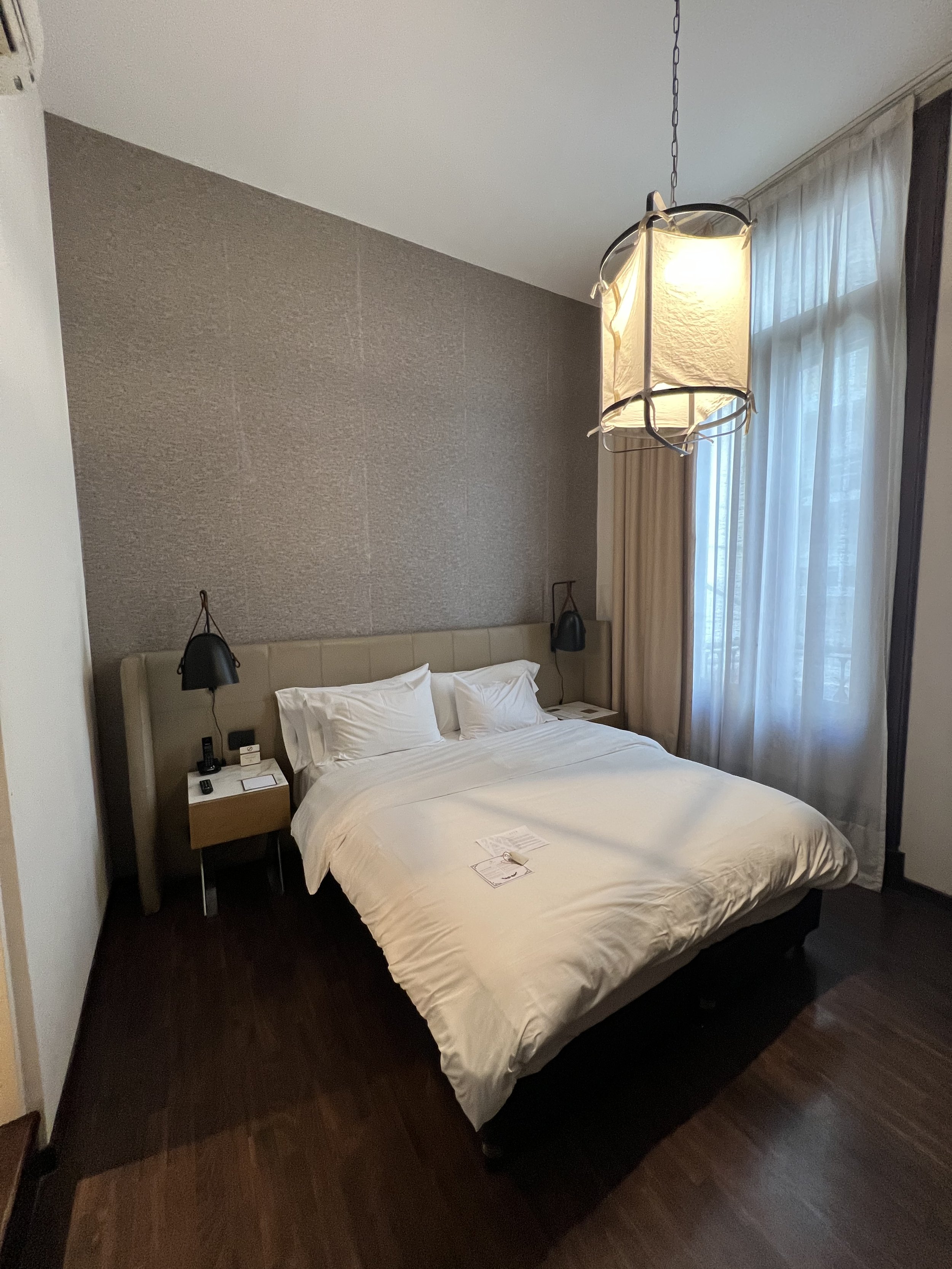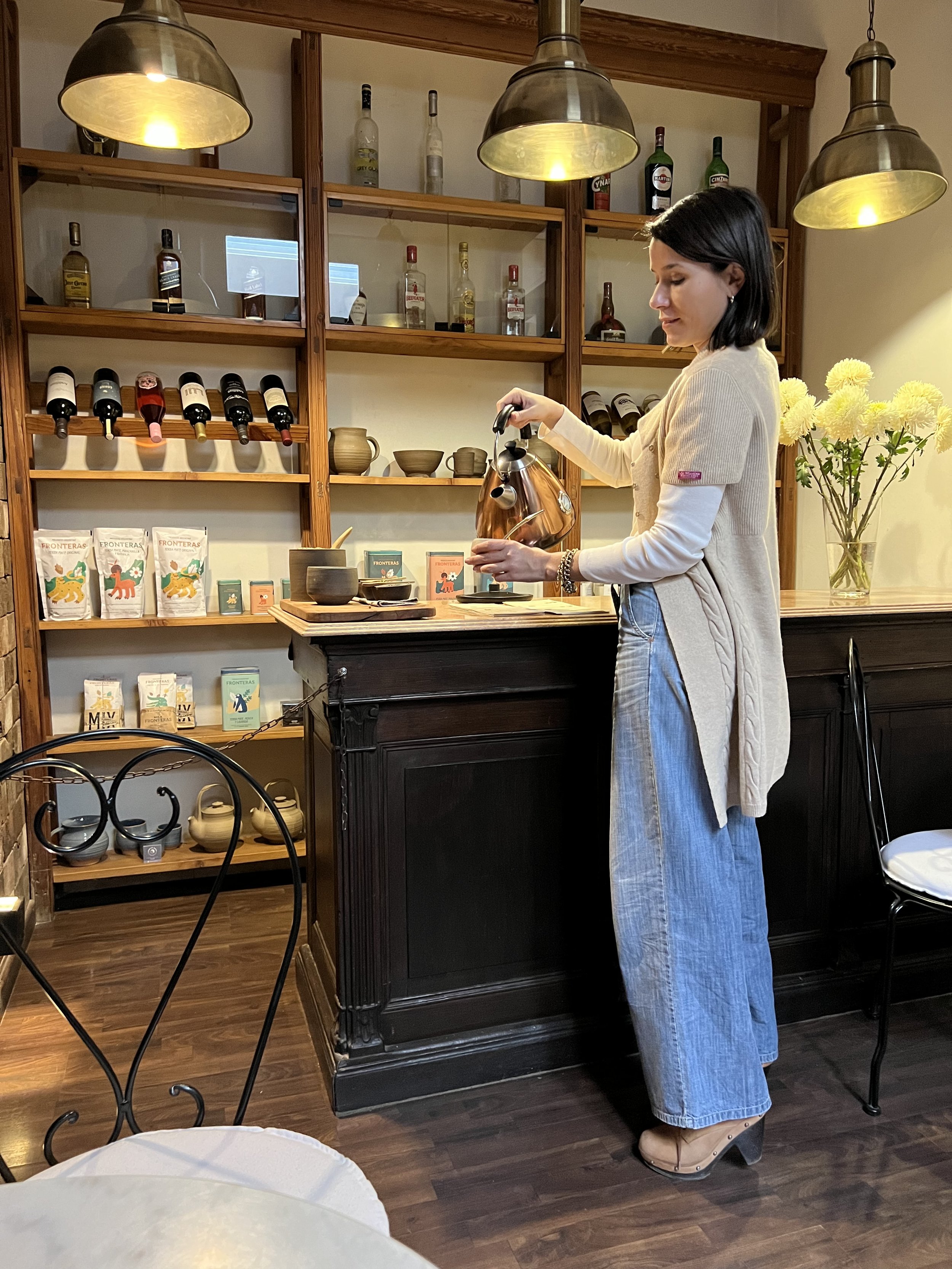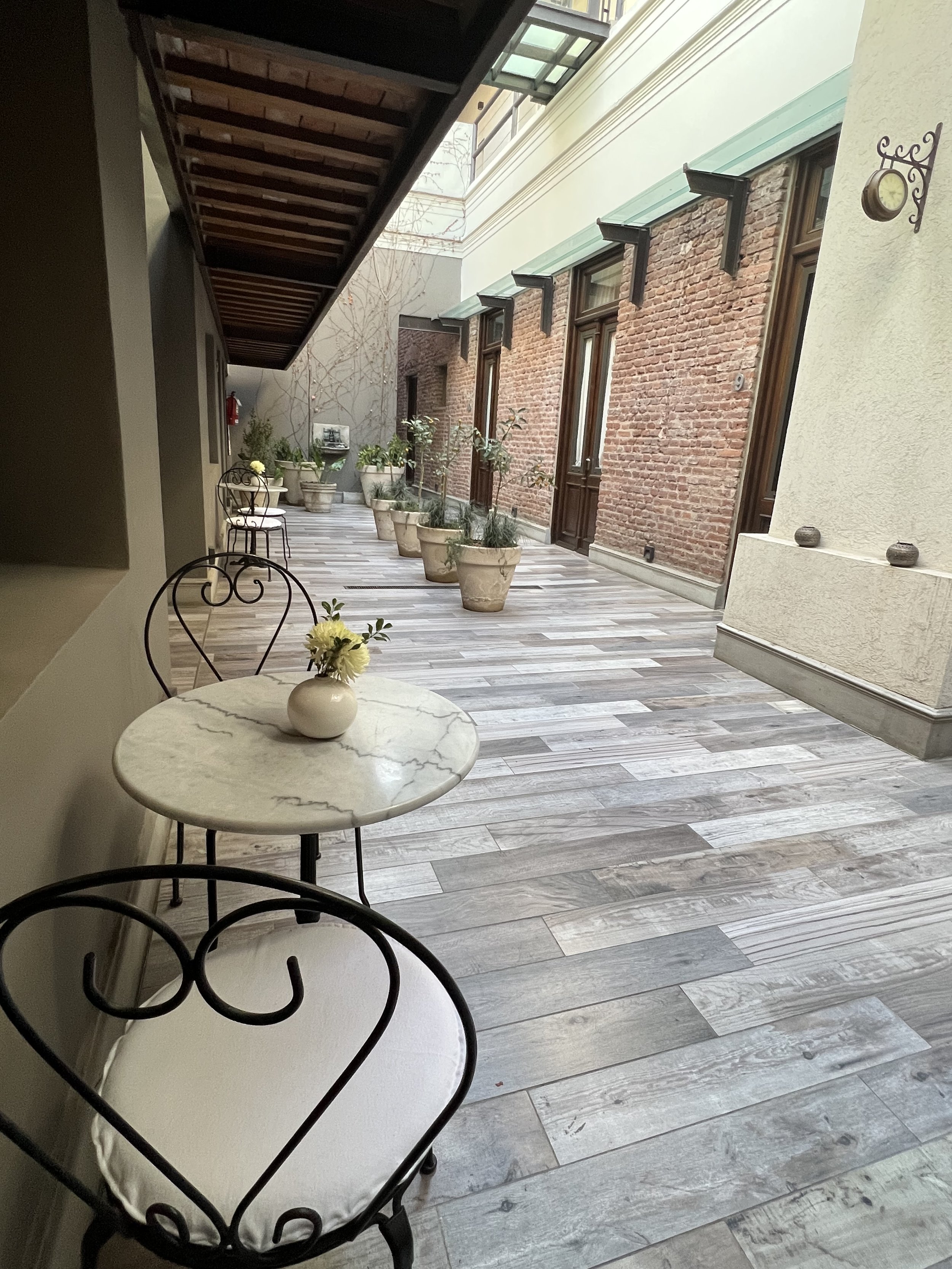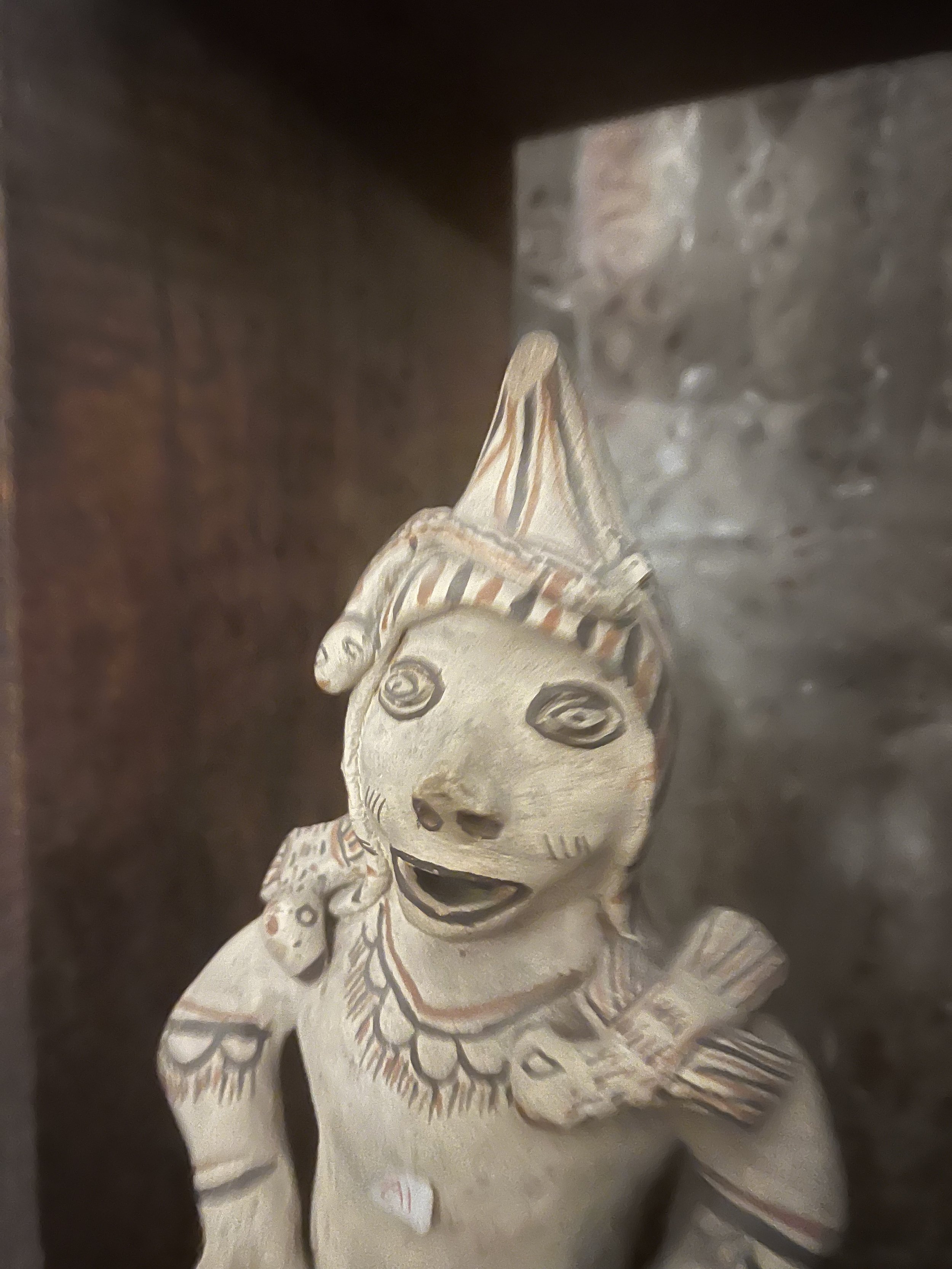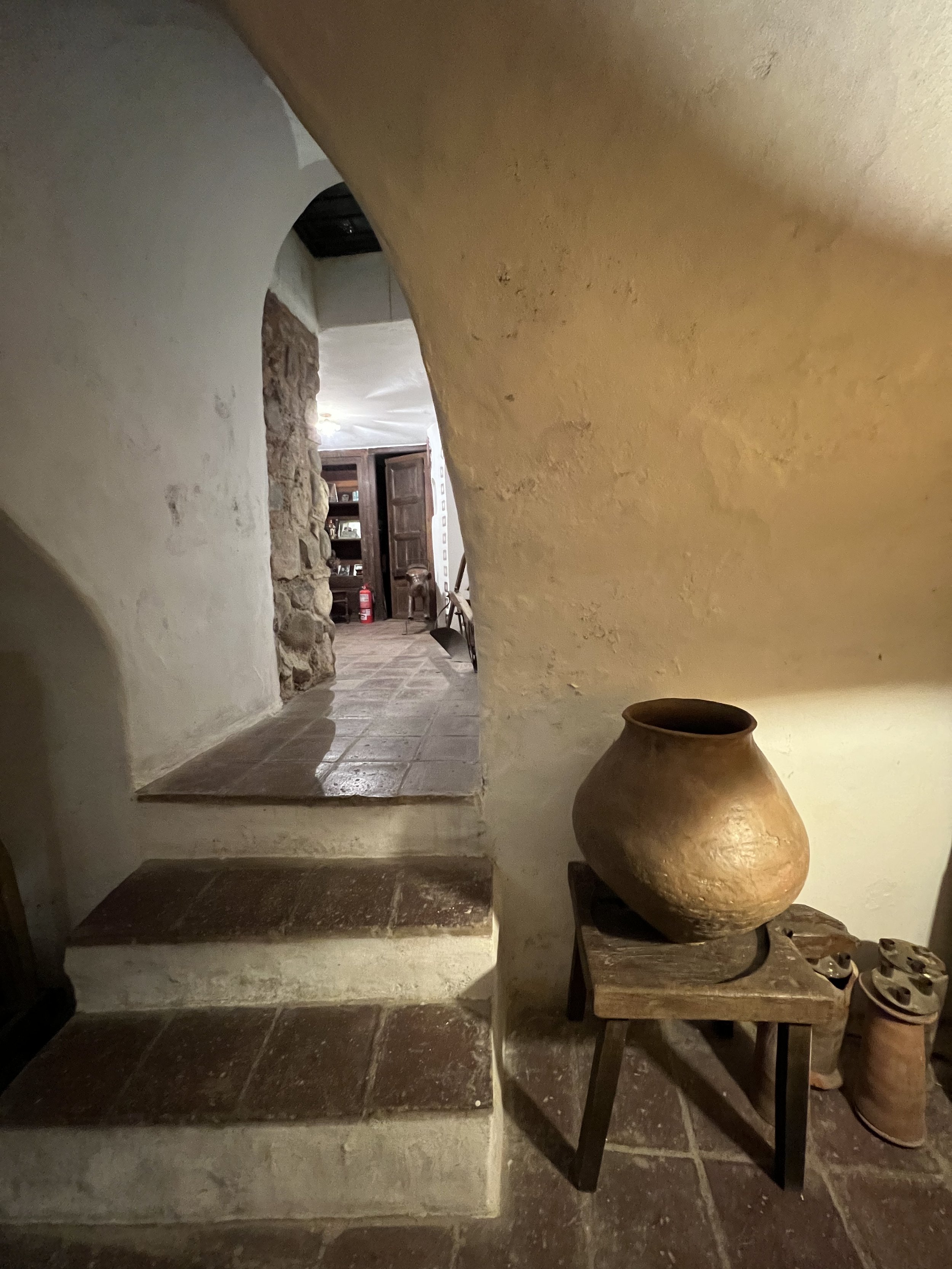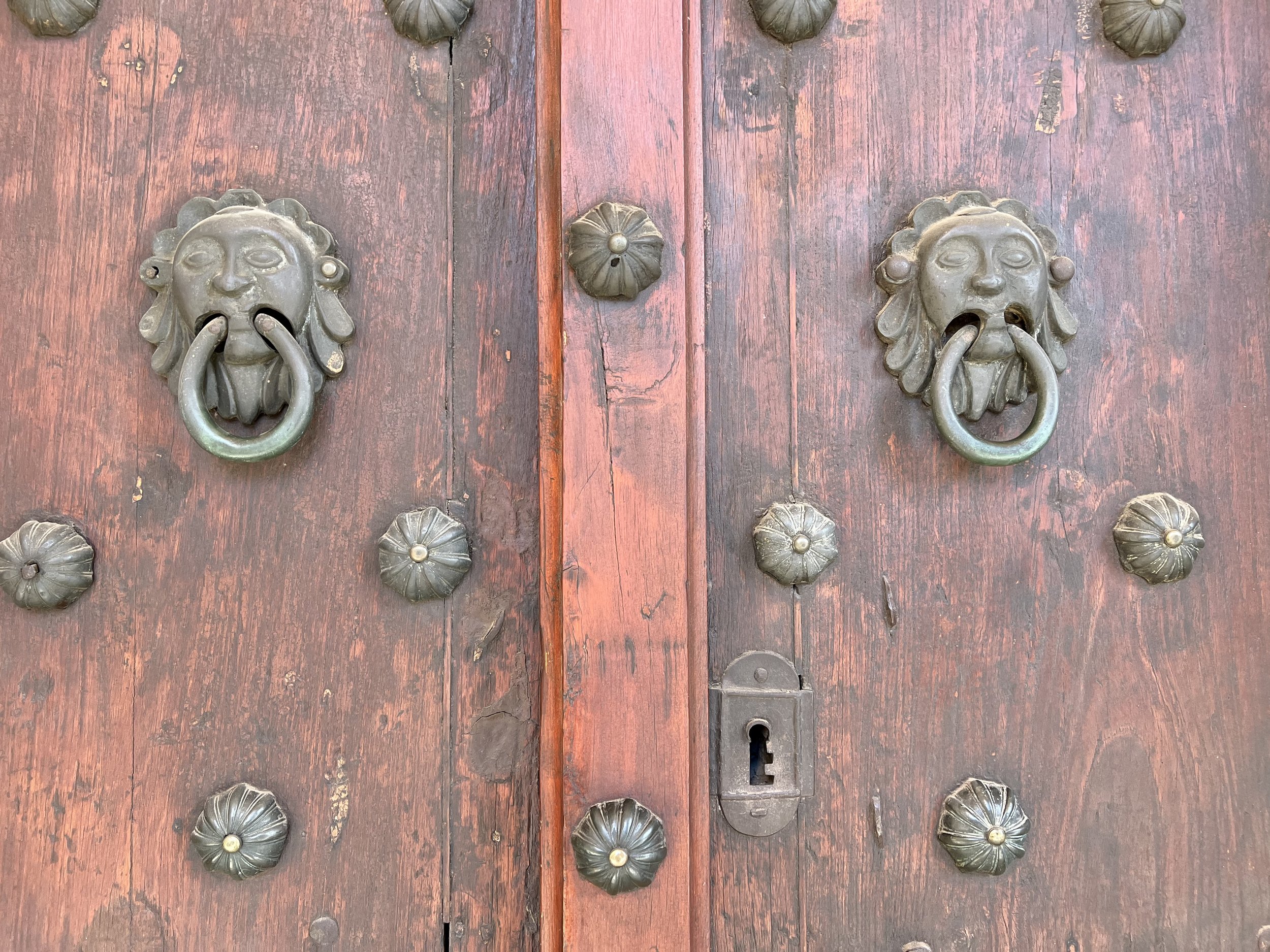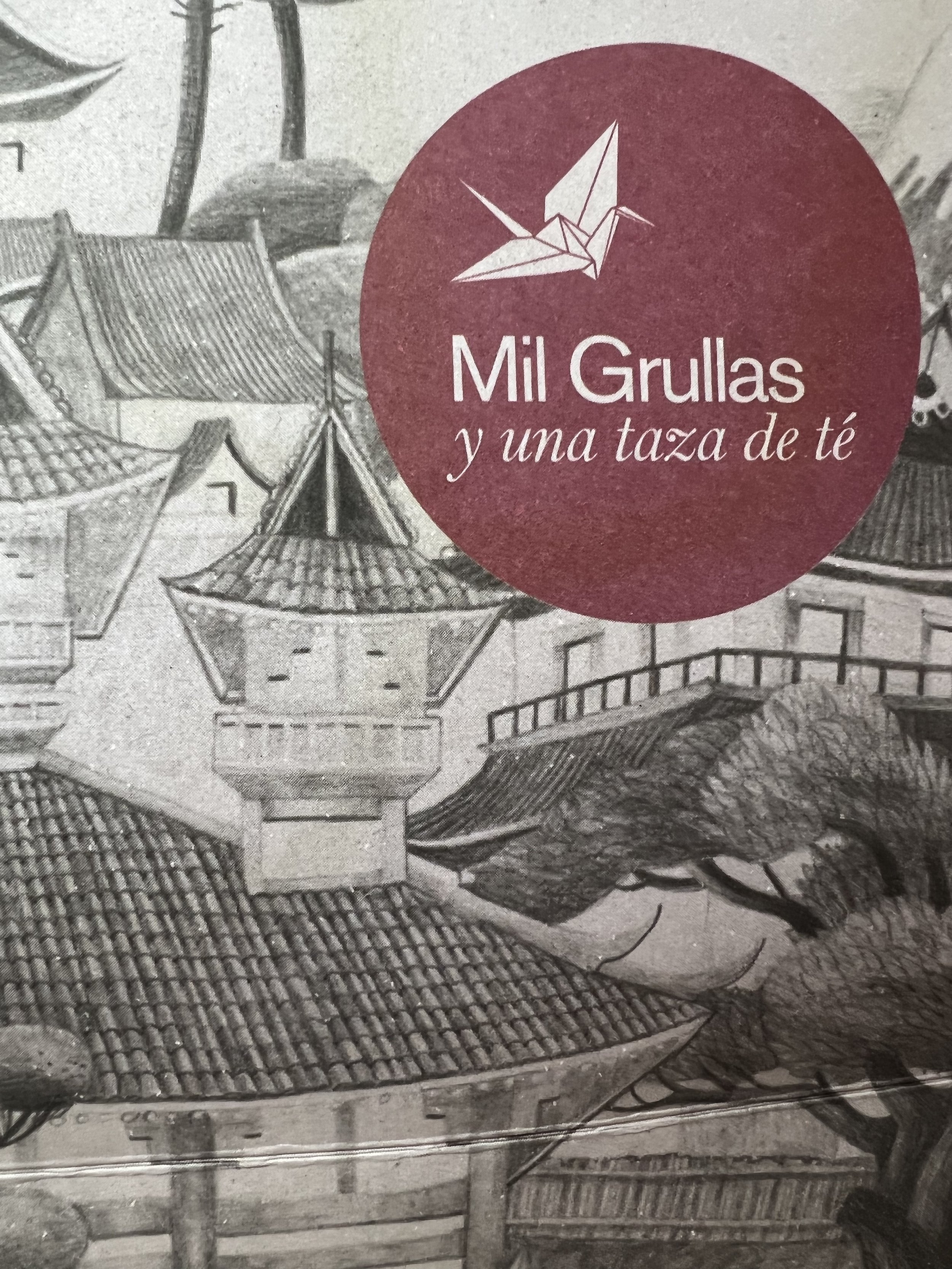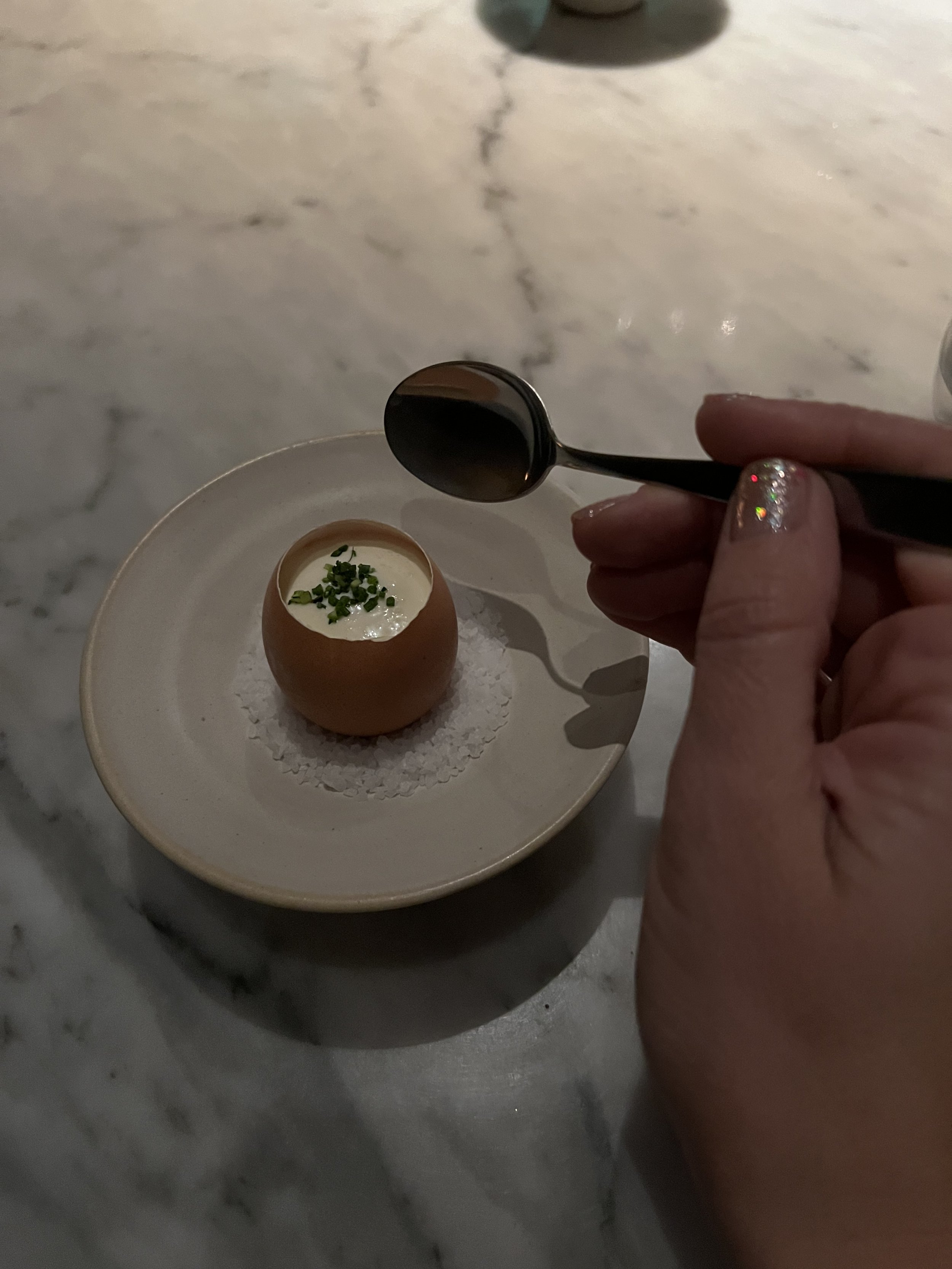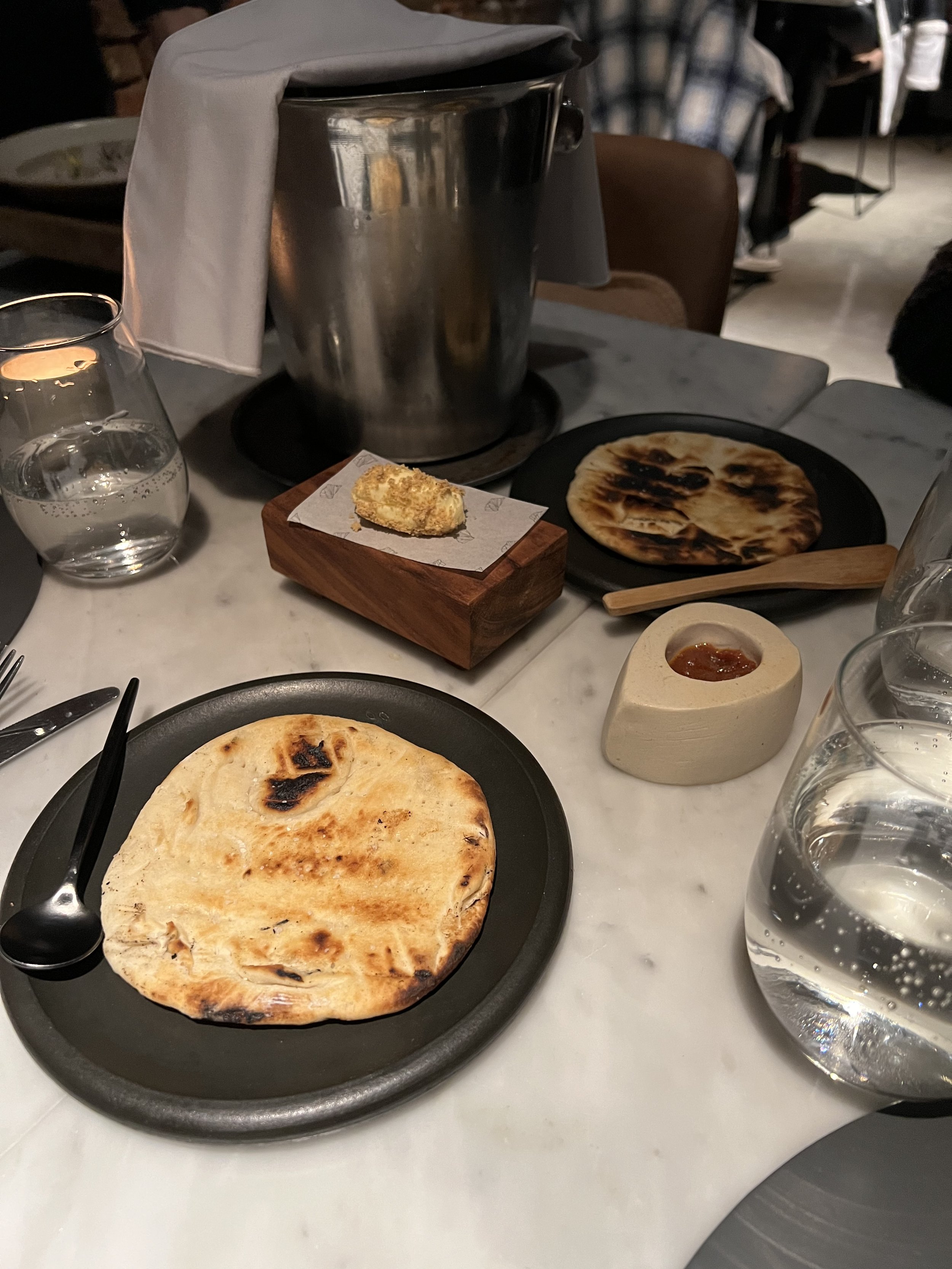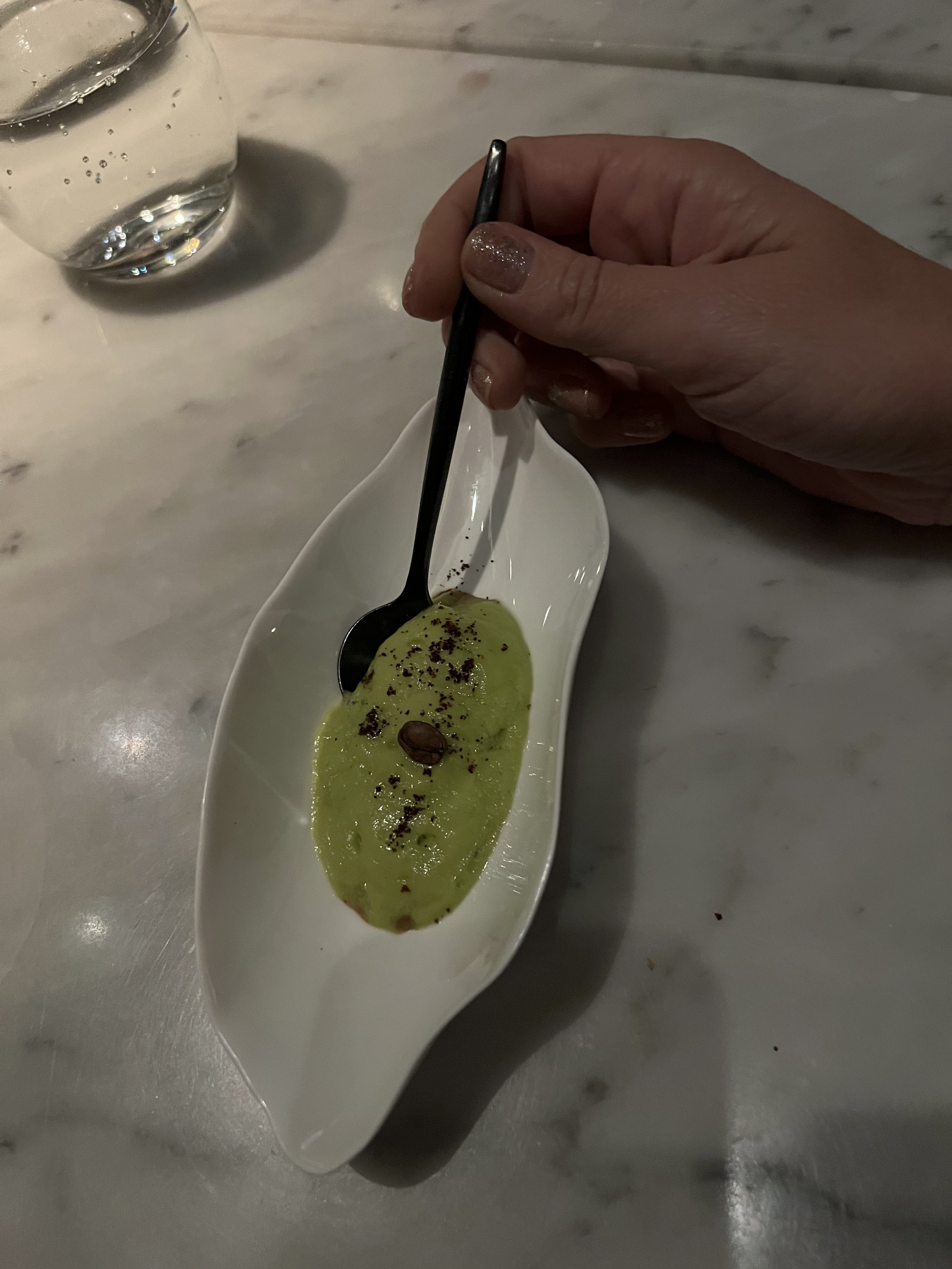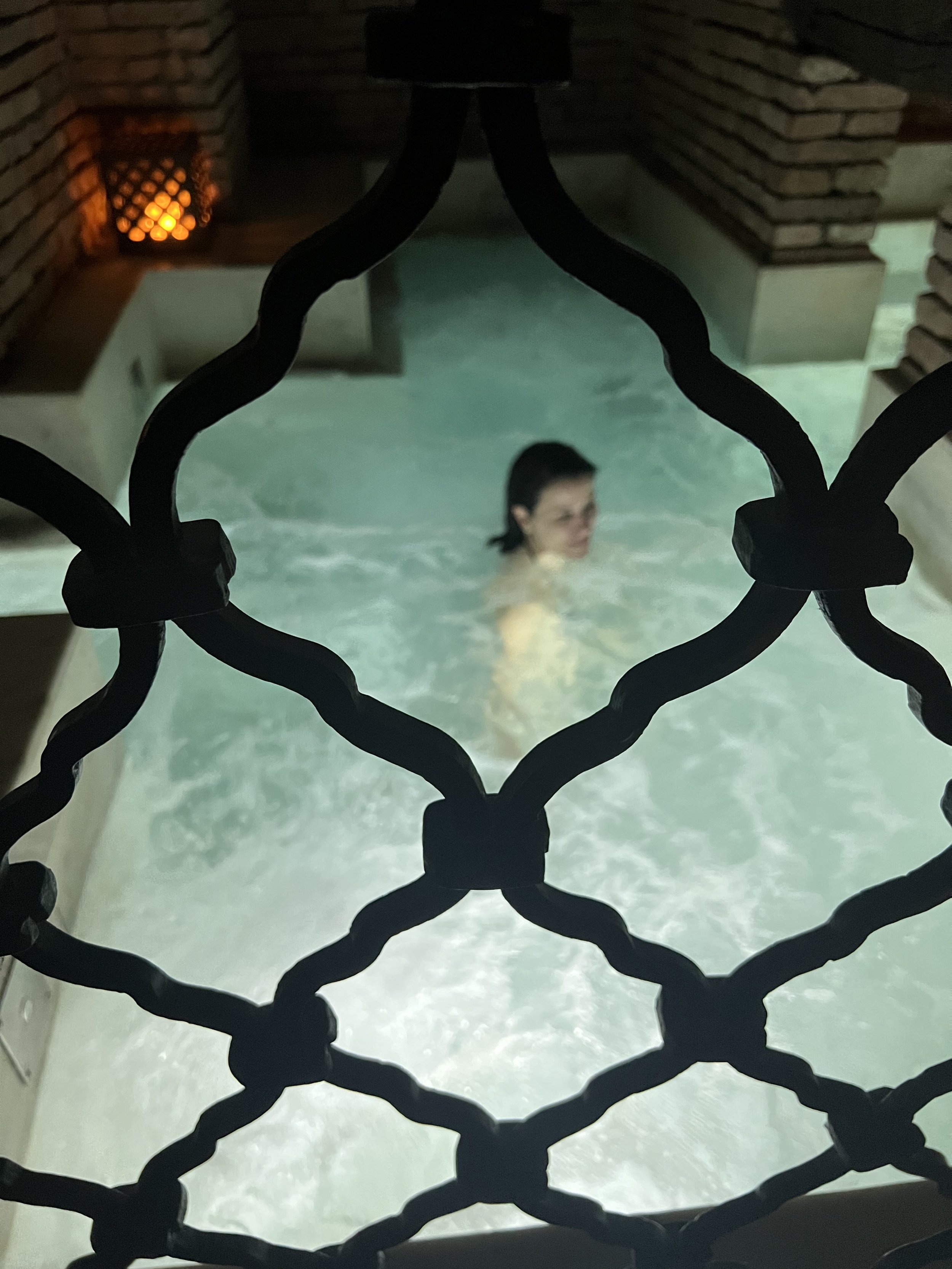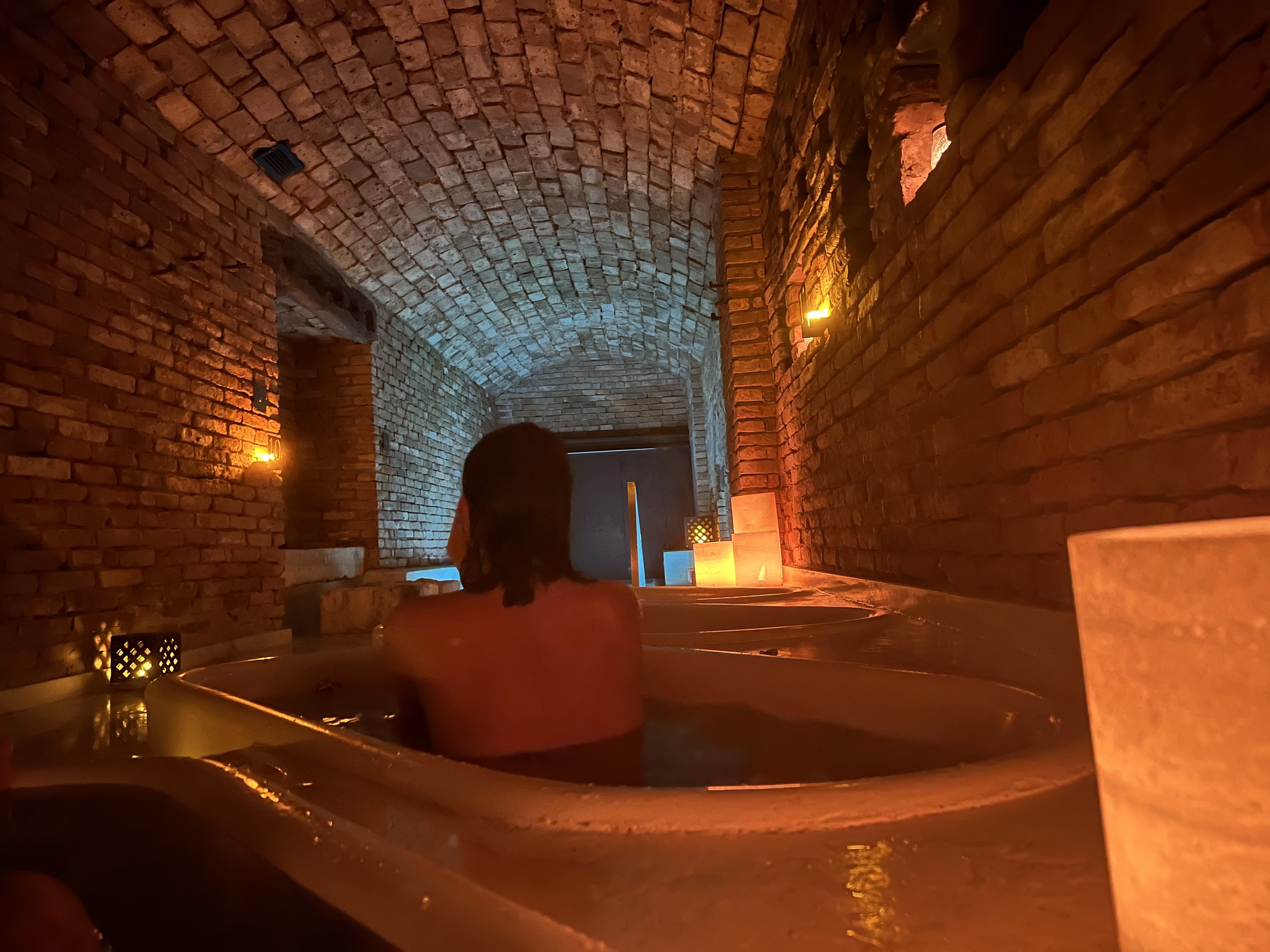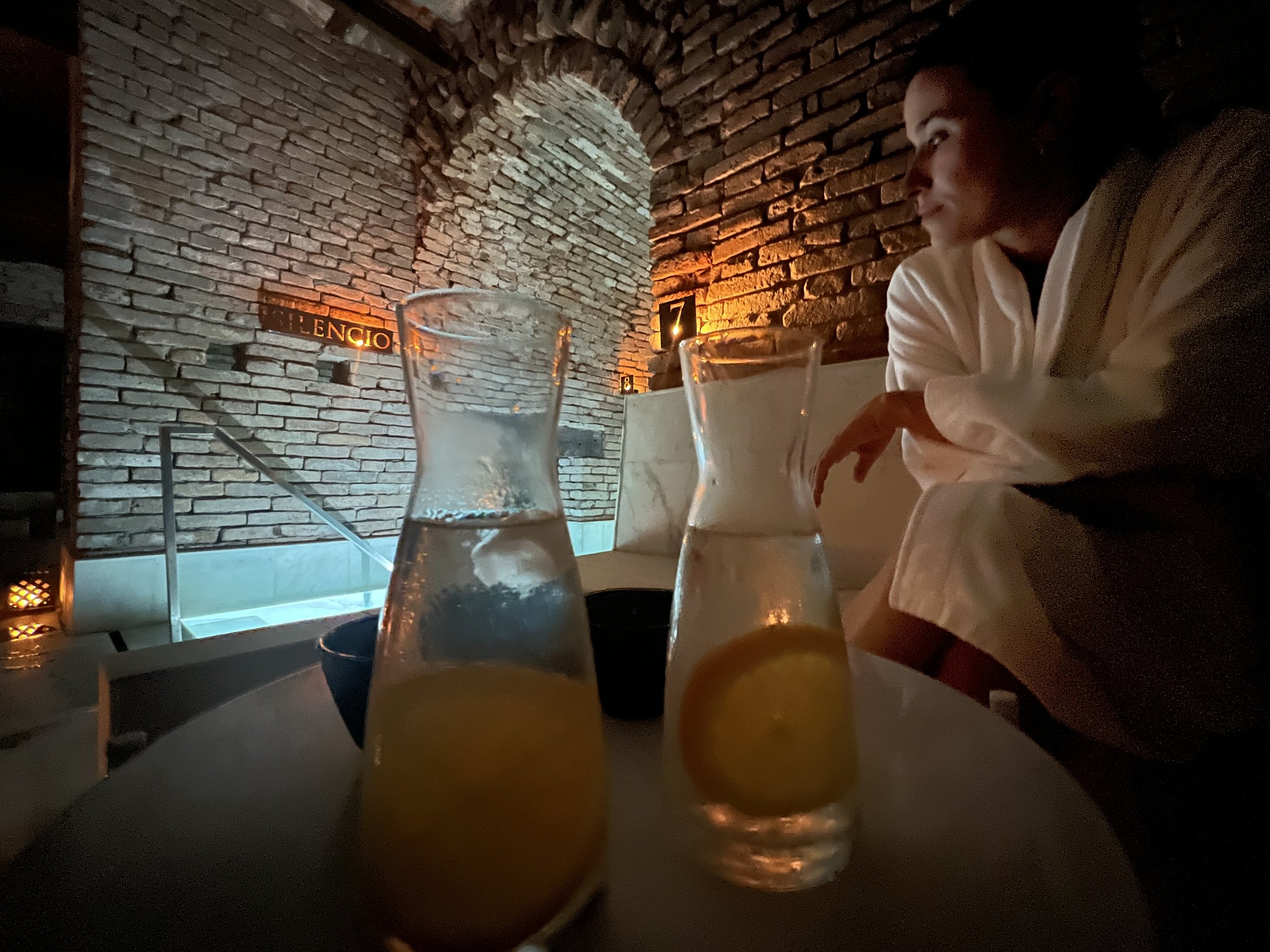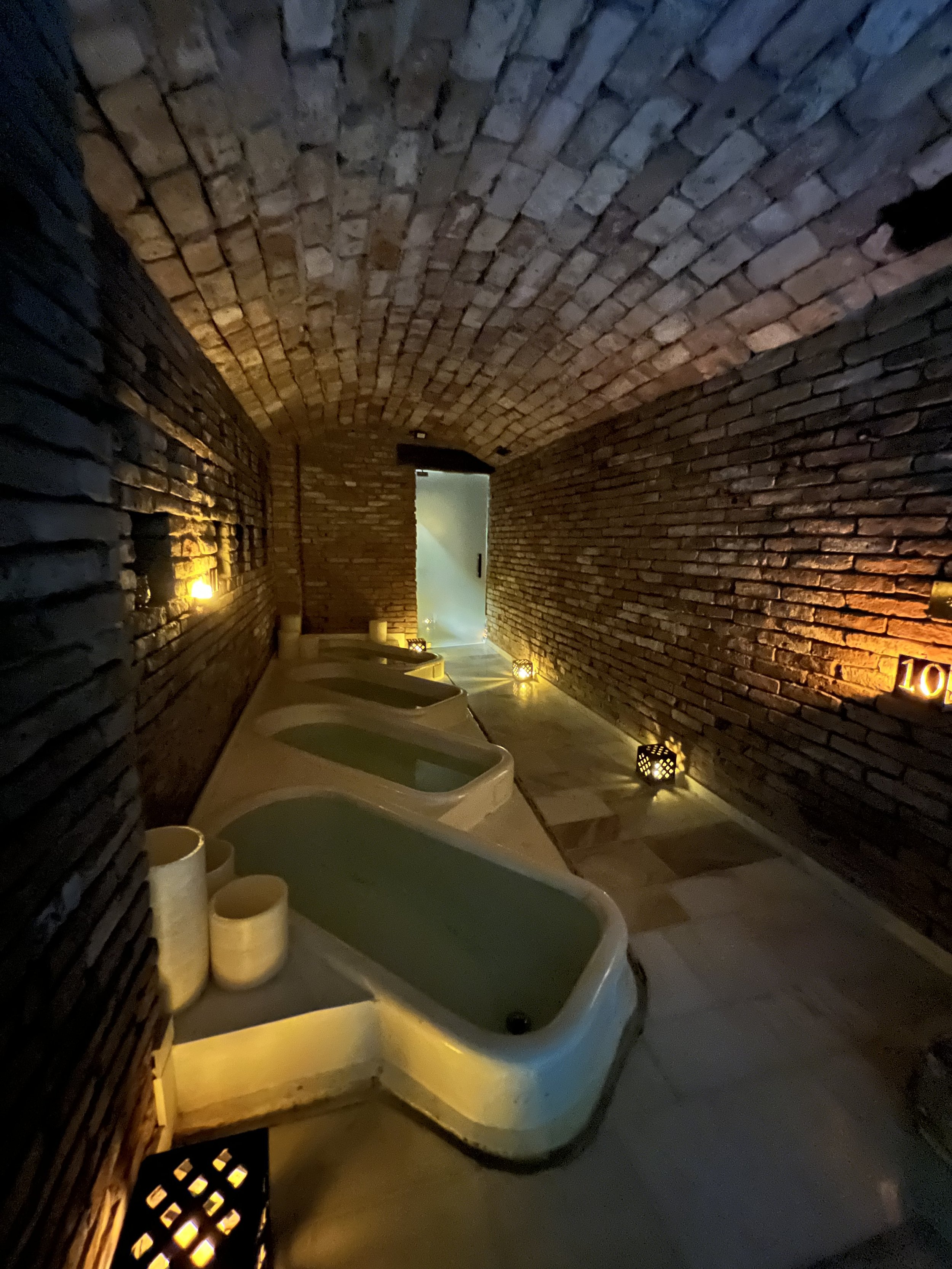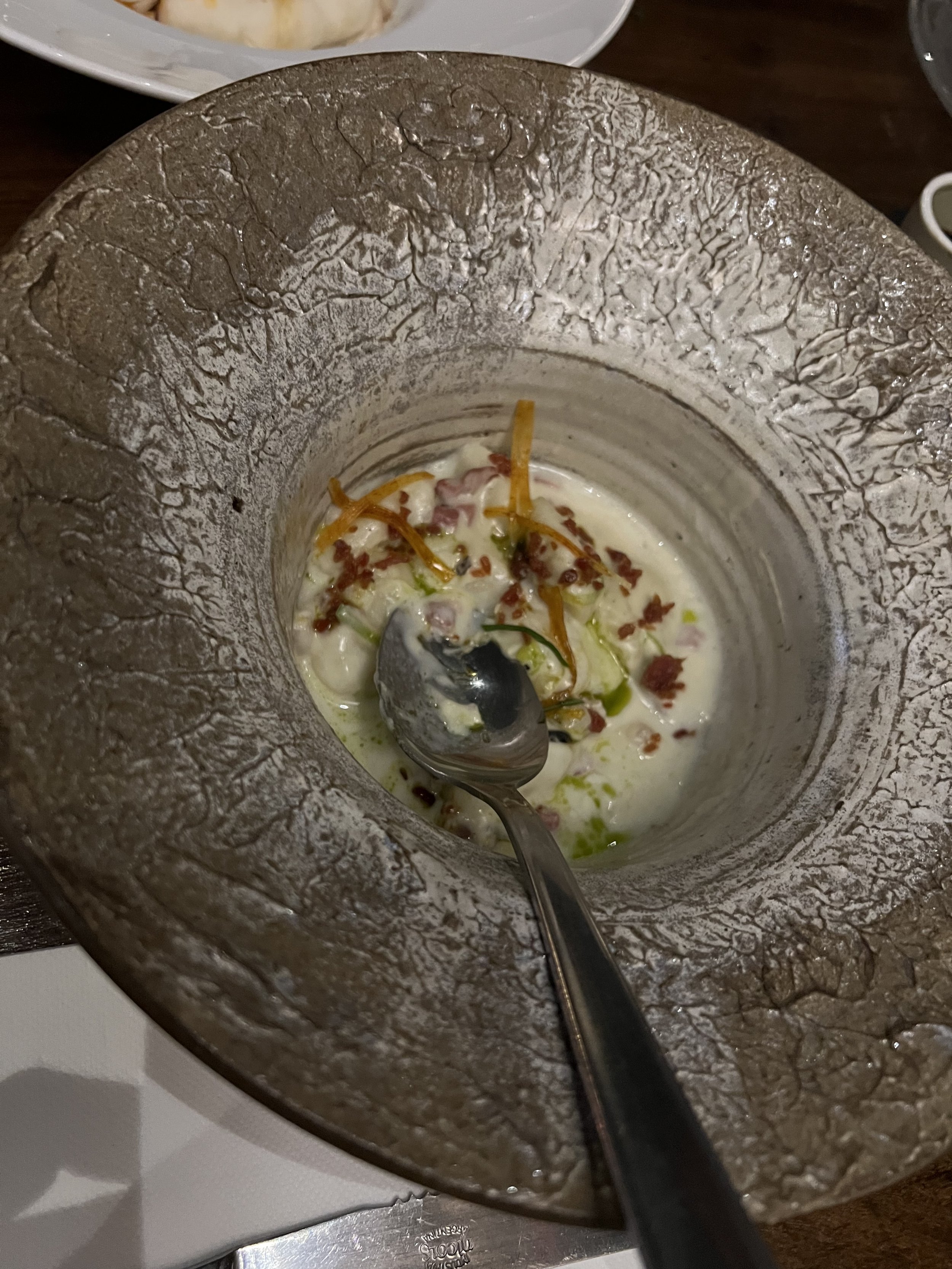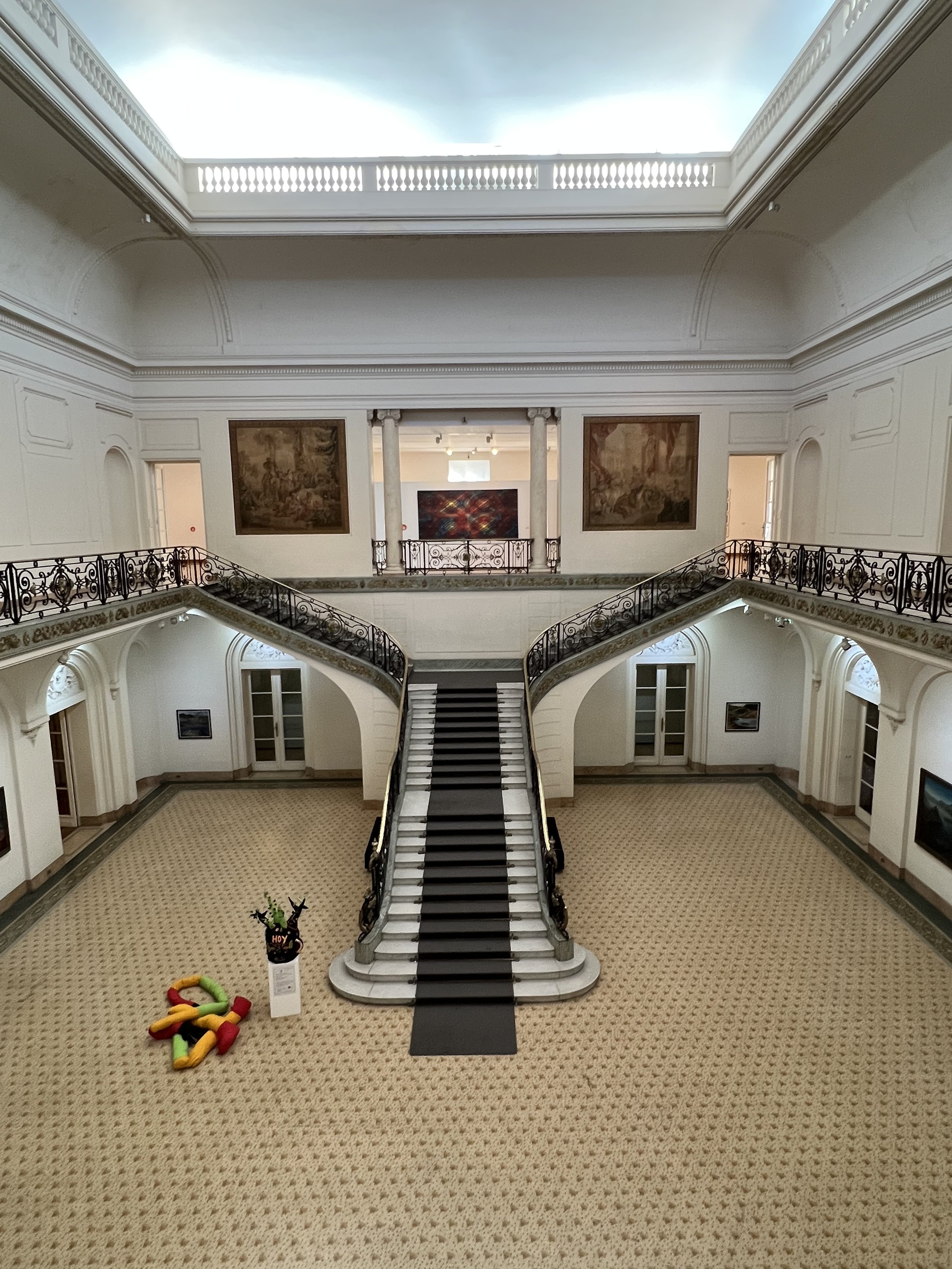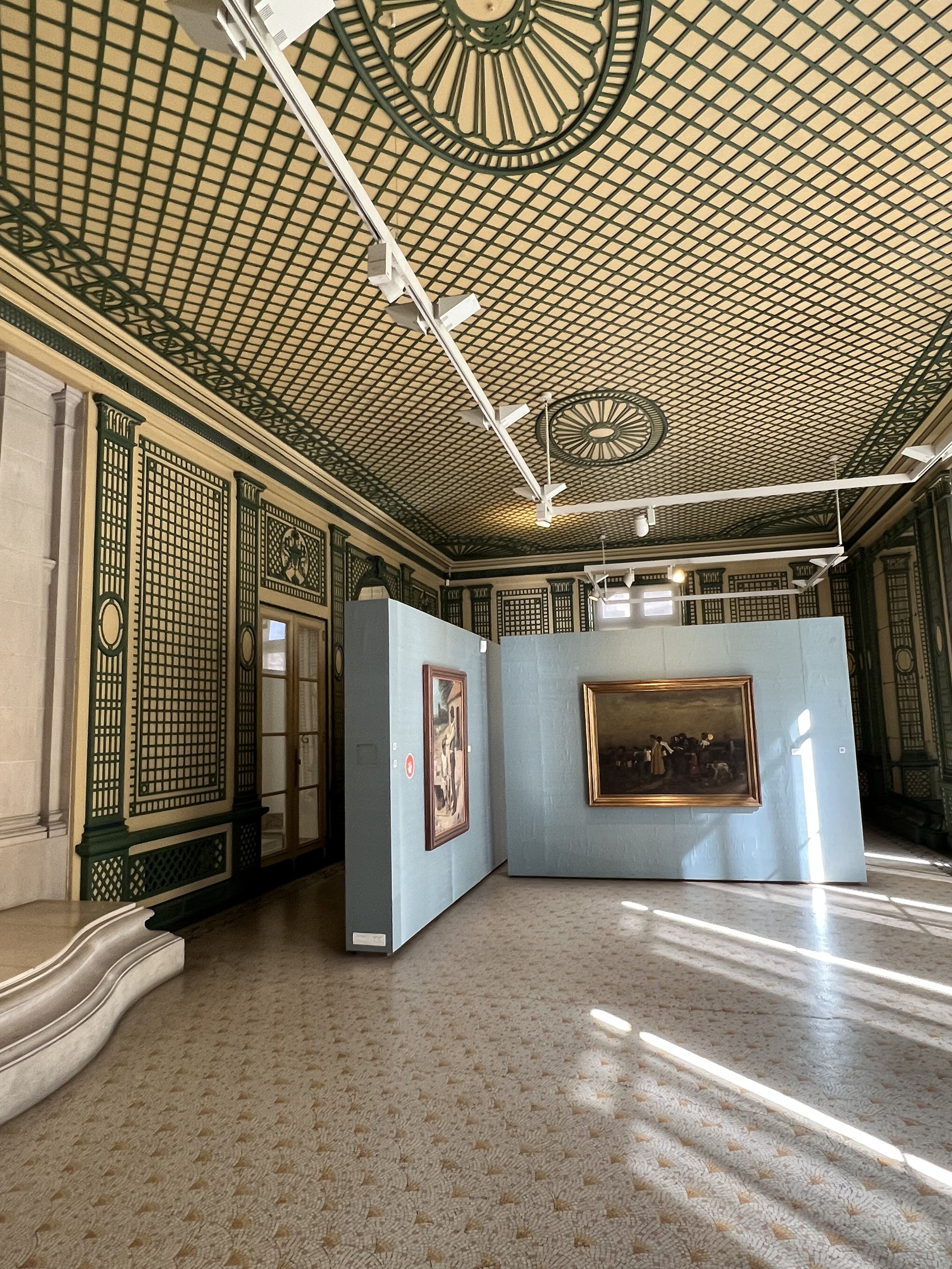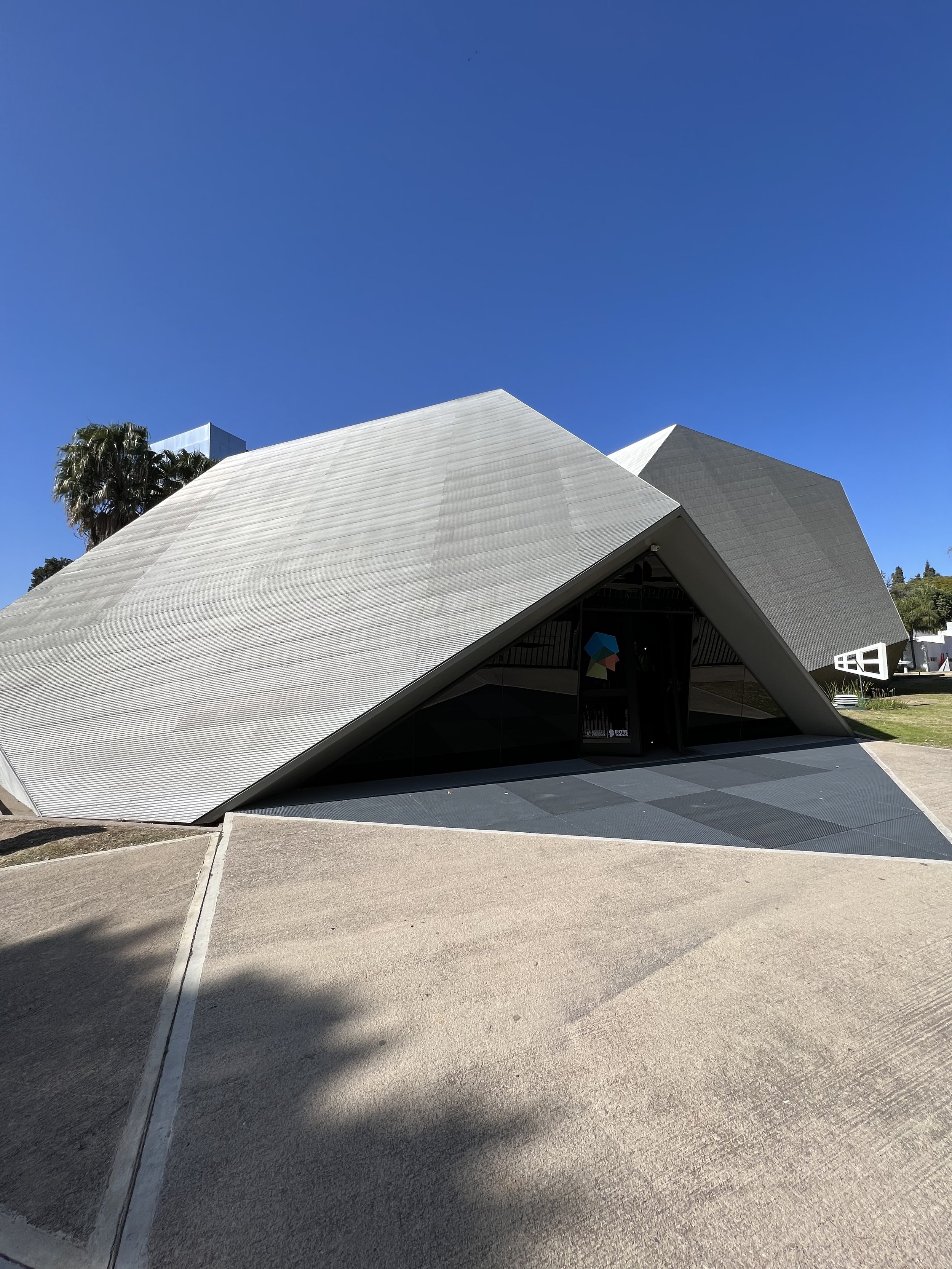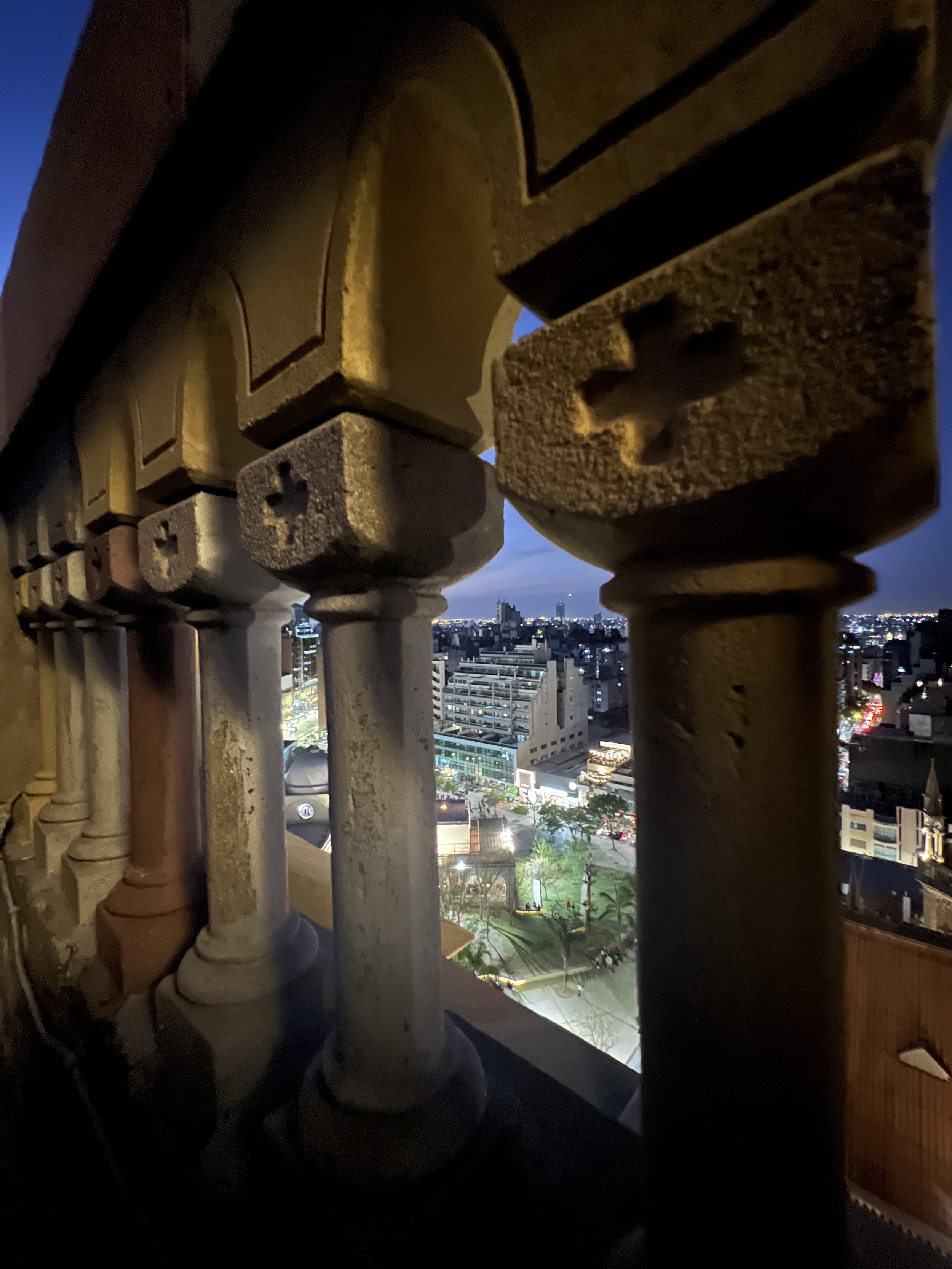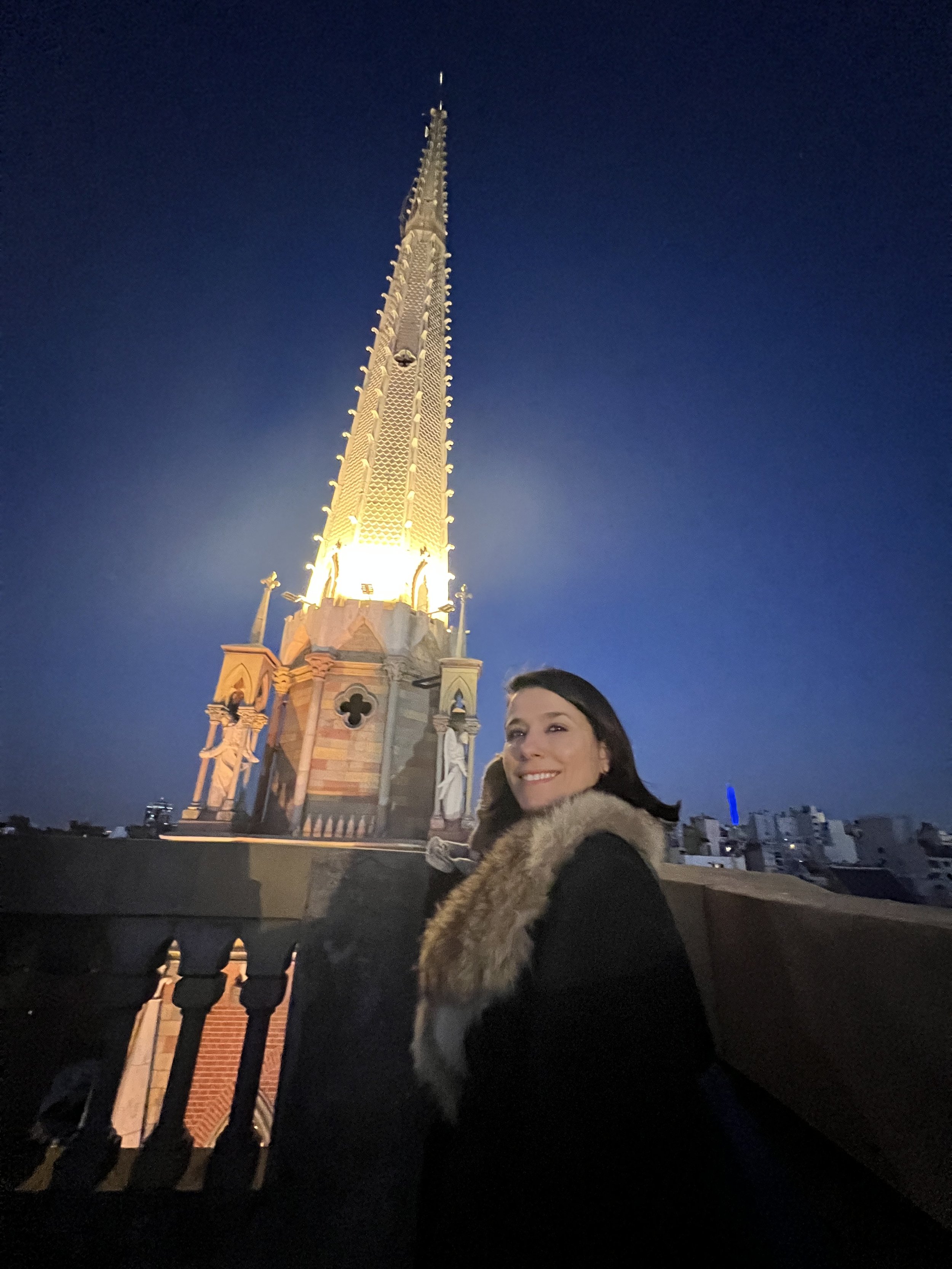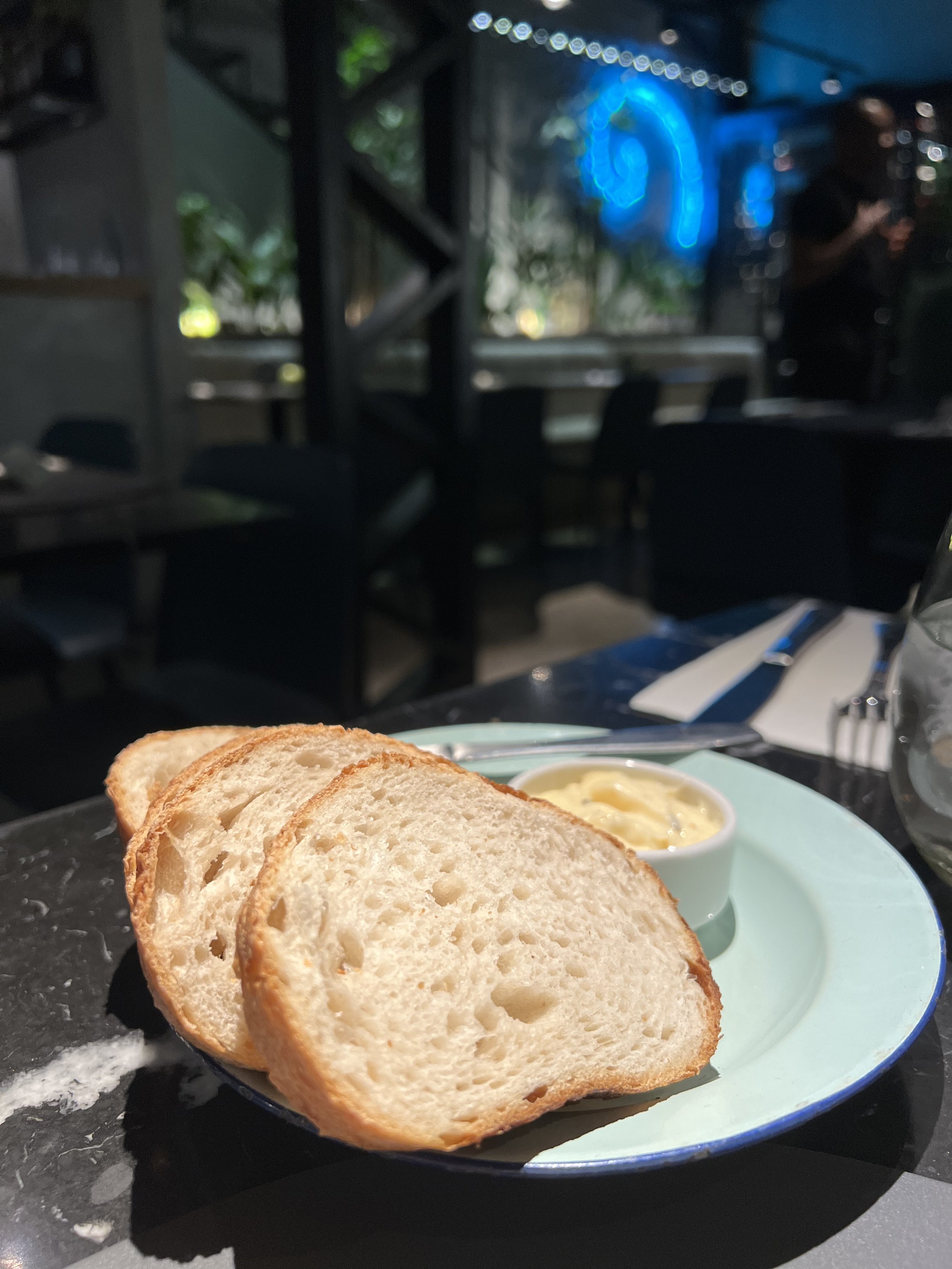A getaway to the city of Cordoba
History, haute cuisine and Roman baths A visit to Córdoba was a pending matter for @tripticity_ after the meeting in Trevelin with Marcelo, the enormous Traveler (with capital letters) and our now great friend. The distinguished Córdoba local had given us fascinating information that we kept repeating until we made the getaway.
The city is a must for any lover of Argentine history.
To begin with, we stayed at Azur boutique hotel. Located on San Jeronimo Street, just a hundred meters from San Martin central square. With a modern design, in neutral colors and very trendy, it was built on an old colonial mansion, which can be seen in some of the old brick walls deliberately exposed amalgamating with the whole decoration. The rooms are comfortable and elegant. It has a corner bar where you are invited to enjoy the traditional Argentine mate. Its terrace allows you to enjoy an infusion or a drink on sunny afternoons, in winter in the case of our visit. In addition to the gym and a small swimming pool, there is Bruma restaurant, where breakfast is also served, which turned out to be extraordinary. Cutting-edge bakery, squeezed juices and cafeteria, all very appetizing.
Another authentic option for lodging is Virreinato hotel, with only three rooms and built on ancient Jesuit ruins, right in the historic center. It houses an outstanding private museum. It was home to Guillermo Barranco and Baron Moyano Miller, who in their many trips around the world acquired unique objects. This is how the exponential collection of antiques it contains was assembled. Some walls are made of calicanto, original from the XVII century. The stairs are made of marble. There are Venetian chandeliers, valuable religious art, Middle Eastern masks, a 17th century mirror, Jesuit paintings, a beautiful Gobelin of King Darius of Persia made in Flanders, a collection of antique porcelain tableware... truly amazing. Also on display is an antique Jesuit basin basin that was found on the property and a door from the Convent of the Teresas. Ana Rocio guided us through the visit and told us a little of the history of this fabulous couple. William was an artist, the Baron was the son of Duchess Anne of Denmark. They fell in love and traveled the five continents, which is proven by contemplating the incalculable amount of antique objects, relics and works of art that make up the collection, declared a World Heritage Site by UNESCO.
The house also bears the hallmarks of its antiquity, as the ceiling of the living room has a cross barrel structure, typical of the Compañía de Jesús. In addition, there is a subterranean tunnel that leads to the old well that used to lead to a water source, next to an old storage cellar. Impressive!
JRight next to Hotel Virreinato is the gastronomic project of Guillermo Hidalgo and Gerardo Pedernera Mármol Siglo 17. That night we tried their sandwich options; a cold one, the "Suidae" (ciabatta bread, Marmol mustard, pork, cole slaw, cucumber relish, BBQ sauce and snack mix) and a hot one, the "Holstein" (ciabatta bread, bell bell pepper mayonnaise, caramelized onion, braised beef, provoleta, green leaves and snack mix). Of the highest quality, we accompanied them with a red wine from the north of Córdoba.
The next morning, three hours of walking awaited us with Mariana Marrama, who offers a personalized tour of the main points of interest in the historic center of the city. Her project Guiándote por Córdoba offers a tour discovering the history of the city. We obviously visit the main church, the Cathedral Nuestra Señora de la Asunción; the San Martín square; the Manzana Jesuítica; the San José de las Carmelitas Descalzas Monastery Church, among other monuments.
After a snack and red fruit lemonade at the trendy bar, Astor Sociedad Hedonista, which operates inside the San Martin Theater, we continued walking to the once suburban neighborhood Güemes, now a center of bohemian and avant-garde; galleries with trendy bars, such as Muy Güemes or Barrio; designer stores; wide range of gastronomic and nightlife, in short, a place to visit. There, we also bought the memorable alfajores Culpa de los Dos, recommended by Clara, the woman from Córdoba with whom we shared Pristine Camps en Salinas Grandes (province of Jujuy). Just across the street, another gem: the Mil Grullas tea house. For tea lovers, it is the mecca of the city with a variety of strands and blends made in Hamburg, as explained to us by Julián and Victoria, who kindly guided us through the small store. The name comes from the legend of the Thousand Cranes, according to which the gods grant you a wish when their manufacture is completed.
In the evening, the appointment was a step dinner at El Papagayo, Javier Rodriguez's restaurant, which is characterized both by the creativity of its cuisine and its peculiar architecture: it is the narrowest dining room in the country, only three meters wide. Two great joys Papagayo gave us; to start with the meeting with the great friend of @tripticity_ Valen Vullo, who is always ready to give advice for those finds that we value so much. Then, upon entering, in the small anteroom, a collection of Salta wines from Bodega El Porvenir welcome the diner. As the proud Salteños that we are, we perceived this detail as a good prelude to what would be the gastronomic experience. And so it was! A superb banquet of about eleven steps.
The sequence went like this:
Mussels and potato
Waldorf cake
Avocado, coffee and white chocolate
Profiterol, poultry pâté and tomato chutney
Short boiled egg, chañar syrup and sour cream
Hake crudo, rice and sesame milk.
Quince, romesco sauce and ham veil
Humita, provolone and creole sauce.
Pasta, oxtail, broccoli and garlic
Grilled lamb, almonds and grapes
Smoked honey, creole cheese and gingerbread
Apple with popcorn
Peanut, chocolate and grapefruit semifreddo
The next morning, we had an appointment at the Azur Baths. A water circuit that proposes to relax in an atmosphere set in the ancient Roman baths. Pleasant aromas; sensations produced by the different temperatures of the water in its different forms; hydromassage; ozone bath; hammam; horizontal shower with different pressures and temperatures; ice flakes exfoliation fountain; ice water well; impluvium (or rain room); pools with massage area for the lower body and high-flow waterfalls for shoulders; just to name a few parts of the two-hour circuit, which ends in a relaxation room with stone beds where you can enjoy a herbal tea with nuts and dried fruits while you experience the light installation by the artist Santiago Viale from Córdoba. Wonderful ending!
The rest of that day we made a very nice tour around the distinguished little town of the Sierras Cordobesas, La Cumbre, with our great friend Marcelo.
On our way back, the feast took place at Cartof, a gourmet fusion restaurant run by chef Dante Aparicio, where we were surprised by the delicacy and delightfulness of each of the dishes we ordered. In a modern building, with an open kitchen and ornamented with large panels in the style of Roy Lichtenstein, we started with their sourdough bread accompanied by wild boar ham butter and excellent truffled oil fries with poached egg and wild boar ham. For the main course, the stars were the risotto with octopus carpaccio, the four cheese gnocchi with smoked bacon, leek and parmesan and the tuna in tempura (San Uri). Just when we thought that nothing could beat such a gourmet feat, the sweet in the form of a pot with soil and a plant arrived: it was the hot chocolate soufflé with blueberry cream ice cream. Pure creativity and flavor!
The next day, we visited the three museums located around Plaza España: the Museo Superior de Bellas Artes Palacio Ferreyra; el Museo Provincial de Bellas Artes Emilio Caraffa and the Museo Provincial de Fotografía Palacio Dionisi. Then, continuing along Poeta Leopoldo Lugones Avenue, you will arrive at the modern Provincial Museum of Natural Sciences Museo Provincial de Ciencias Naturales "Dr. Arturo Umberto Illía".
At sunset, the Experiencia Capuchinos awaited us. The Church of Sagrado Corazón de Jesús de los Capuchinos offers a guided tour discovering the history of the beautiful work of the architect Augusto Ferrari and a unique view of the city, after climbing 182 steps (about forty meters) to the top of the tower. First, the monumental reinforced concrete façade, ornately divided into seven levels, can be seen. On the first, seventy columns surround the three entrance porticoes (seven in Catholicism represents forgiveness), then twenty-four paired columns representing Christian martyrs and pagan peoples seeking conversion; above, the large sculptures of Moses and St. John (representing the Old and New Testaments). On the second level are muscular Atlanteans representing original sin. The twelve apostles on the third level without Judas, but with St. Paul (Apostle of the Gentiles). On the fourth level there are twelve windows behind Jesus representing the twelve tribes of Israel. Then, on the fifth level there are two large towers, and on the top, St. Francis with several saints.
The peculiarity of the towers is that one has a spire and the other does not, because the left tower represents imperfection and the right tower perfection. At the end, a cross of four meters high.
The whole building combines bright colors achieved from a mixture of concrete with ferrites (in ocher, yellow and black). It took five years to build.
Then we visited the terraces and balconies - dominated by gargoyles - and finally, after climbing the spiral staircase, we reached the top of the tower for an unbeatable view of the "Docta".
We ended that intense day at Standard 69, Javier Rodríguez's new gastronomic proposal in the renovated Güemes neighborhood. The service was in charge of the attentive Gonzalo Murúa, who assisted us in the choice of dishes and wine. We started with delicious Serrano ham croquettes, followed by grilled prawns with beet and chestnut cream; smoked provoleta, spiced honey and almonds; and grilled sausage with tamarind sauce and corn criollo. We accompanied the banquet with a Cabernet Franc from Achaval Ferrer. To top it off, the delicious pumpkin in syrup (creamy rice pudding, quinoto and pumpkin seed praline).
Our last day in the city began at Le Dereau Specialty Café, with a Nicaraguan coffee filtered with Aeropress and a Flat White, accompanied by an avocado and cream cheese toast and another baked French toast with orange coulis and seasonal fruits. Right next door is the Museum of Religious Art Juan de Tejeda, a real gem; beyond the interest that can generate the collection, which is memorable, it is essential to enter the site located right in front of the Cathedral Church for one of the most beautiful views of its domes.
A quick walk along the busy pedestrian street of Cordoba to reach the Mercado Norte, the place chosen for the farewell. Authentic, vibrant and colorful, it invites you to wander through its corridors. There the proposals of Fazzio and Diran are tempting. In the latter we fortunately got a small table to enjoy the genuine Arabian and Armenian food. Diran was born in Aleppo and cooking is his art. When we told him how surprised we were by the tranquility with which he prepares each dish, with absolute humility he confessed that it is because he knows what he is doing, perhaps because of those years of experience that have made him an excellent cook. It is a pleasure to watch him while he assembles the delicate dishes.
We started with meat and walnut philo dough empanada; we continued with shawarma (the Arabian sandwich of loin and filleted pork, with sesame paste sauce and labban, wrapped in pita bread) and finally the excellent Kebbe labanie: kebbe bombitas stuffed with butter and mint in labban broth. Exquisite! Indescribable the perfect combination of flavors. We could not leave the market, nor Cordoba, without a sweet, so we tried the last remaining date and walnut mamul; the classic baklava of philo dough with walnuts and cinnamon dipped in syrup and a date bonbon dipped in chocolate, accompanied by the unforgettable Armenian coffee with borra. Thank you Diran for giving us the best farewell to the city that gave you home and the one that reveres you for your extraordinary cuisine!
To top it all off, a quick walk along the Urban Art Corridor, right in front of the Suquía River, at the height of the Mestre Bridge, where the tall and modern buildings of the city make up the avant-garde Capitalinas neighborhood.
Farewell Cordoba, the city of rich history and remarkable flavors!


